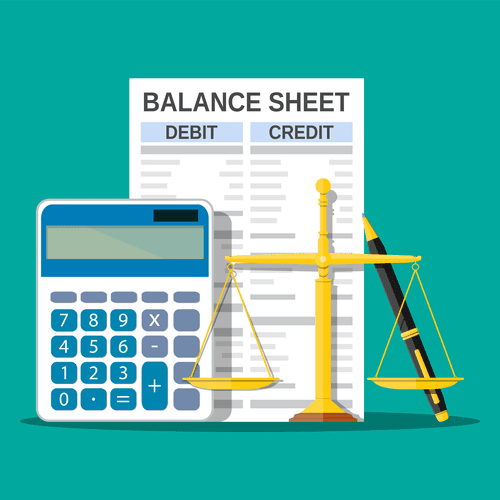
Two important metrics it affects are return on equity (ROE) and weighted average cost of capital (WACC). The D/E ratio doesn’t consider profitability or your business’s ability to generate cash flow. A high D/E ratio might still be acceptable if you have solid and stable net cash flows. The ratio also neglects to account for off-balance-sheet debts, which can impact your company’s proper financial leverage. The D/E ratio is based on the balance sheet, which is a snapshot of your company’s financial standing at a specific point in time. Fluctuations in liabilities or equity that occur after the balance sheet date may, therefore, not be accounted for.
How frequently should a company analyze its debt-to-equity ratio?
- A company with a negative net worth can have a negative debt-to-equity ratio.
- Plans are created using defined, objective criteria based on generally accepted investment theory; they are not based on your needs or risk profile.
- A higher ratio means the company uses more debt to finance its operations, which can be a double-edged sword.
- Imagine a company with $1 million in short-term payables, such as wages, accounts payable, and notes, and $500,000 in long-term debt.
- She has ghostwritten financial guidebooks for industry professionals and even a personal memoir.
- A well-balanced ratio can indicate stability, while an excessively high or low ratio may signal potential financial challenges.
- That’s why it’s important not only to track your D/E ratio, but also to understand the personal financial implications that come with taking on debt.
With built-in accounting features, automated reporting, and AI-driven financial analytics, Deskera ERP helps businesses track their Debt to Equity Ratio with precision. By leveraging such advanced tools, companies can ensure financial stability while making data-driven decisions to optimize capital structure. On the other hand, companies with a low D/E ratio may be seen as financially stable but could be missing opportunities for growth by not leveraging external capital effectively. Striking the right balance is key to long-term success, and this guide will help you understand how to measure and optimize this ratio.
- Let’s look at what is a good debt to equity ratio for a company by looking at an example.
- A company’s ability to service long-term debt will depend on its long-term business prospects, which are less certain.
- On the other hand, a low D/E ratio suggests a conservative approach, relying more on equity to fund operations.
- It can signal to investors whether the company leans more heavily on debt or equity financing.
- To illustrate how these ratios work in practice, let’s analyze 10 leading Indian companies.
- This allows businesses to fund expansion projects more quickly than might otherwise be possible, theoretically increasing profits at an accelerated rate.
How To Conduct Financial Analysis for Your Company
Lenders also look at metrics like the Leverage Ratio (Debt / EBITDA), Interest Coverage Ratio (EBITDA / Interest), Liquidity Ratio, and many others to judge a company. A company with a ratio this high will almost certainly have to pay a premium to issue Debt in the future based on the YTM of bond issuances. These calculations are based on the market values of Debt and Equity for each company, and they tell us that BLDR’s leverage is close to the median of the set. As the subject company’s Debt-to-Equity Ratio increases, its Re-Levered Beta increases, so its Cost of Equity goes up. In the previous example, we have found that Company ABC has a Debt-to-Equity Ratio of 1.5.

Leveraging Debt-to-Equity Ratio for Successful Real Estate Investments
Companies function in a very similar way, though debt ratio formula the formula itself takes different forms. It may produce inaccurate or inappropriate responses and is not investment research or a recommendation. All output is provided “as is,” without warranties, and use is at your own risk.


The D/E ratio is much more meaningful when Outsource Invoicing examined in context alongside other factors. Therefore, the overarching limitation is that ratio is not a one-and-done metric. The other important context here is that utility companies are often natural monopolies.
What is the Average D/E Ratio for the Industry?
Our company, Tokenist Media LLC, is community supported and may receive a small commission when you purchase products or services through links on our website. Click here for a full list of our partners and an in-depth explanation on how we get paid. However, it is crucial to compare the D/E ratio with peers in the same industry and consider the company’s specific circumstances for a more insightful analysis. When comparing your D/E ratio to benchmarks, make sure you’re using industry-specific data. If your D/E ratio rises too quickly, it could signal financial instability, even if your revenue is strong. What’s considered healthy can vary widely depending on your industry and growth strategy.
A High-Yield Cash Account (“HYCA”) is a secondary brokerage account with Public Investing. Funds in your HYCA are automatically deposited into partner banks (“Partner Banks”), where that cash earns interest and is eligible for FDIC insurance. Your Annual Percentage Yield is variable and may change at the discretion of the Partner Banks or Public Investing. Apex Clearing and Public Investing receive administrative fees for operating this program, which reduce the amount of interest paid on swept cash. Signup on the Public app to start reviewing company fundamentals and build a multi-asset portfolio that includes everything from stocks and options to bonds, crypto, and a High-Yield Cash Account. Combine D/E, Current/Quick Ratios, and ROE, and consider industry benchmarks and qualitative factors.
Financial insights for your business
Use the Quick Ratio when you need a rigorous assessment of immediate liquidity, especially in industries where inventory turnover is slow. Let’s dive into each ratio, explore their applications, and compare real-world examples from leading Indian companies. There is no universally agreed upon “ideal” D/E ratio, though generally, investors want it to be 2 or lower. The D/E ratio is part of the gearing ratio family and is the most commonly used among them. These industry-specific factors definitely matter when it comes to assessing D/E. This means that for every dollar in equity, the firm has 76 cents ledger account in debt.
